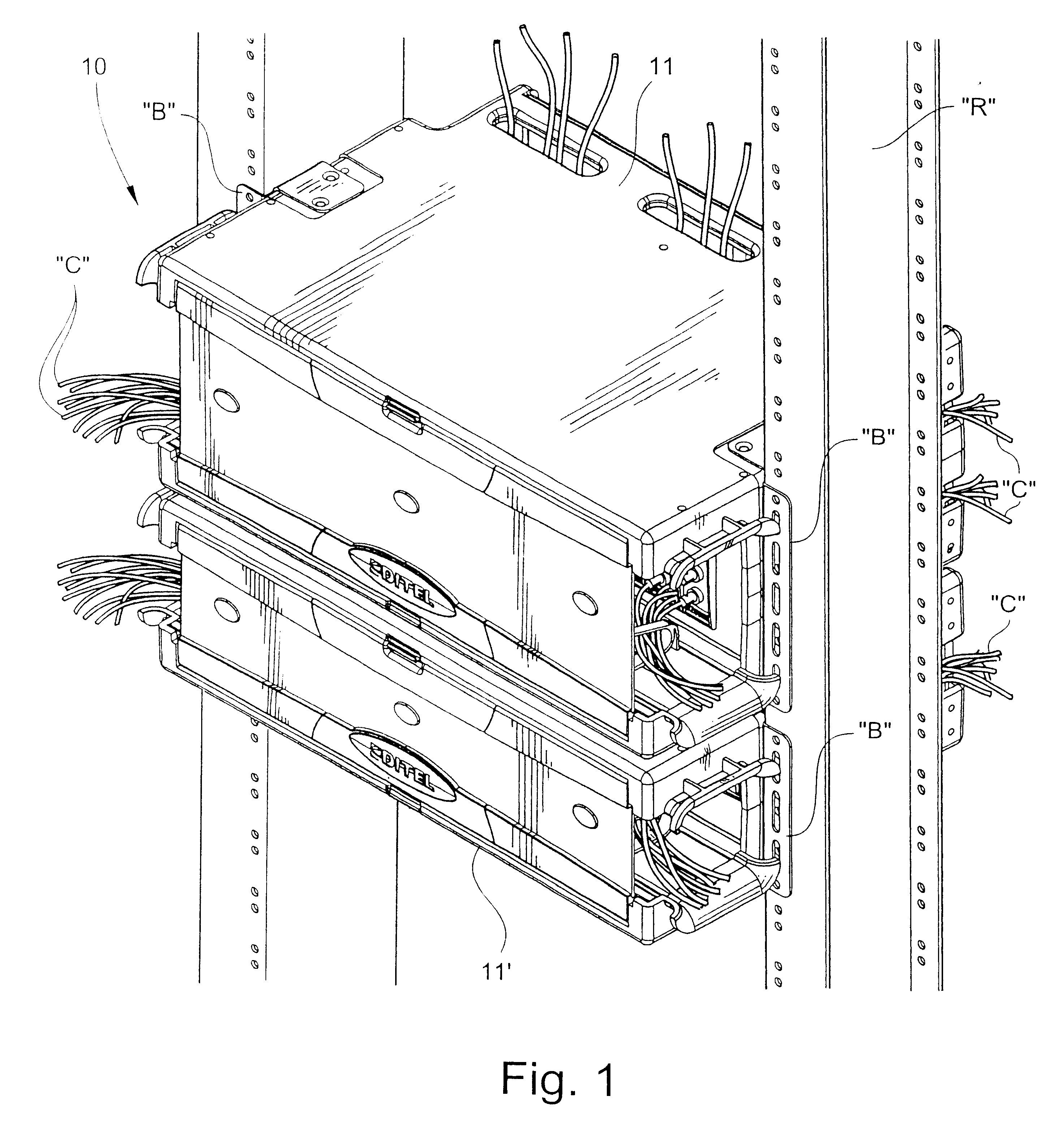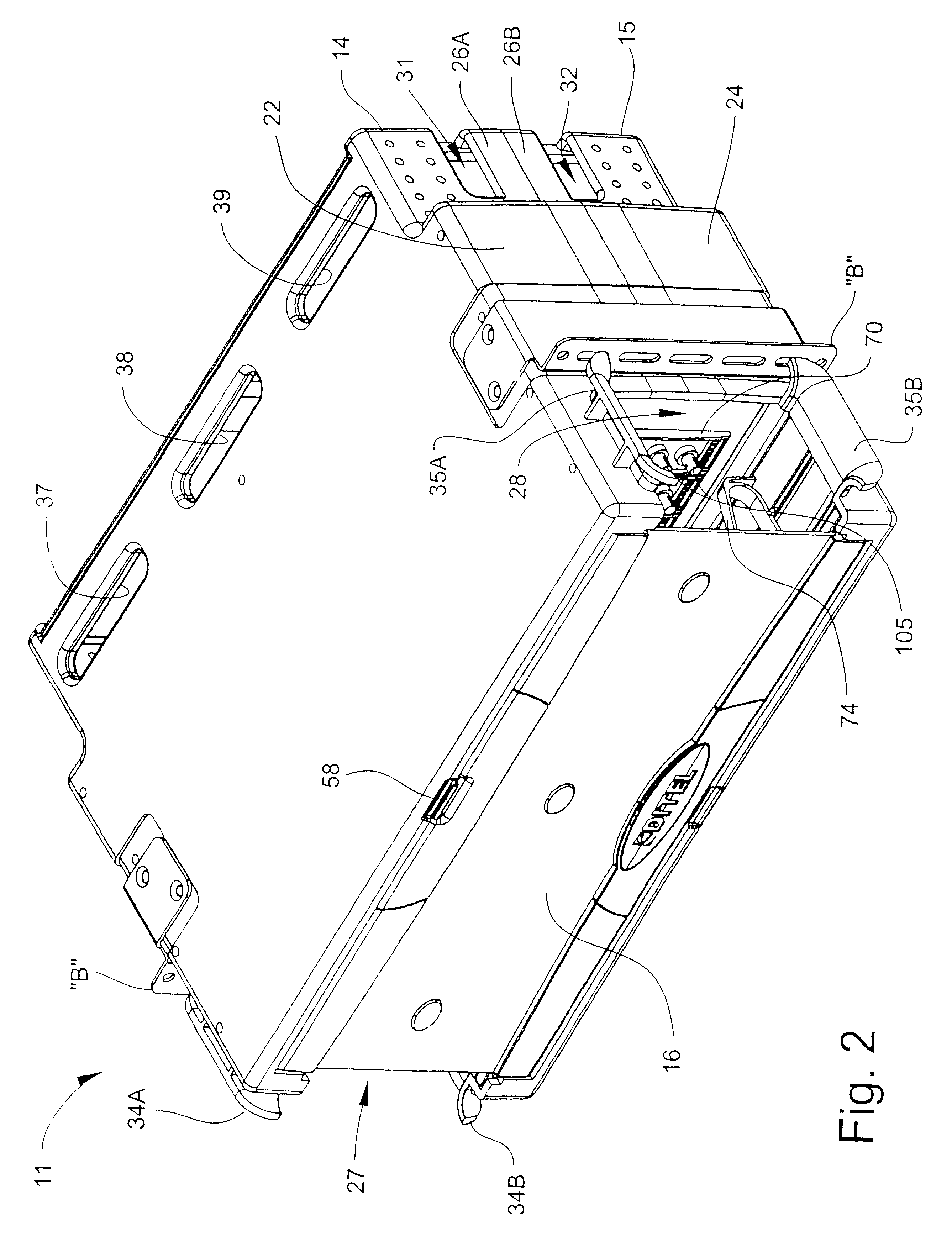Cable connector plate and method for interconnecting ends of fiber optic cable
a technology of fiber optic cable and connector plate, which is applied in the direction of optics, fibre mechanical structures, instruments, etc., can solve the problem of substantially increasing the cable bend radius, and achieve the effect of convenient and convenient interconnection of fiber
- Summary
- Abstract
- Description
- Claims
- Application Information
AI Technical Summary
Benefits of technology
Problems solved by technology
Method used
Image
Examples
third embodiment
a cable connector plate 70C is shown in FIG. 15. The connector plate 70C includes a base 71 with integrally-formed angled steps 71A-71F, and respective openings formed in the steps 71A-71F for receiving and holding adapters 105C at distinct angles relative to a notional plane "P" facing either of the front and back sides of the plate 70C such that the adapters 105C extend along respective intersecting axes. According to one embodiment, each adapter 105C is formed in two halves with axiallyaligned end portions projecting outward from each of the front and back sides of the base 71. The angle "A'" of the first, top adapter is approximately 70 degrees. The corresponding angle of the second adapter is approximately 74 degrees. The angle of the third adapter is approximately 78 degrees. The angle of the fourth adapter is approximately 82 degrees. The angle of the fifth adapter is approximately 86 degrees. The angle of the sixth and bottom adapter is approximately 90 degrees. By angling t...
PUM
 Login to View More
Login to View More Abstract
Description
Claims
Application Information
 Login to View More
Login to View More - R&D
- Intellectual Property
- Life Sciences
- Materials
- Tech Scout
- Unparalleled Data Quality
- Higher Quality Content
- 60% Fewer Hallucinations
Browse by: Latest US Patents, China's latest patents, Technical Efficacy Thesaurus, Application Domain, Technology Topic, Popular Technical Reports.
© 2025 PatSnap. All rights reserved.Legal|Privacy policy|Modern Slavery Act Transparency Statement|Sitemap|About US| Contact US: help@patsnap.com



